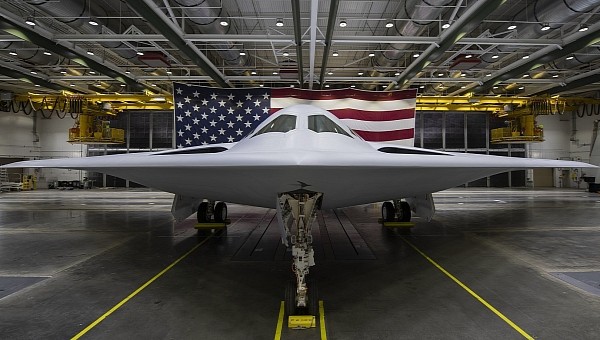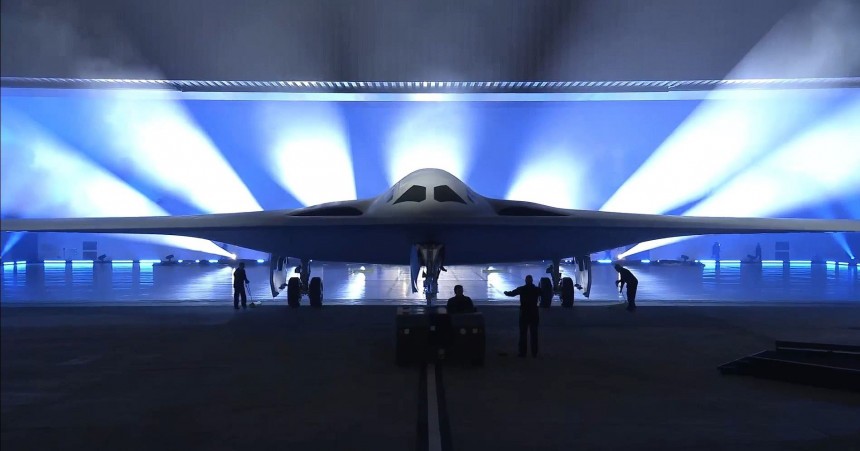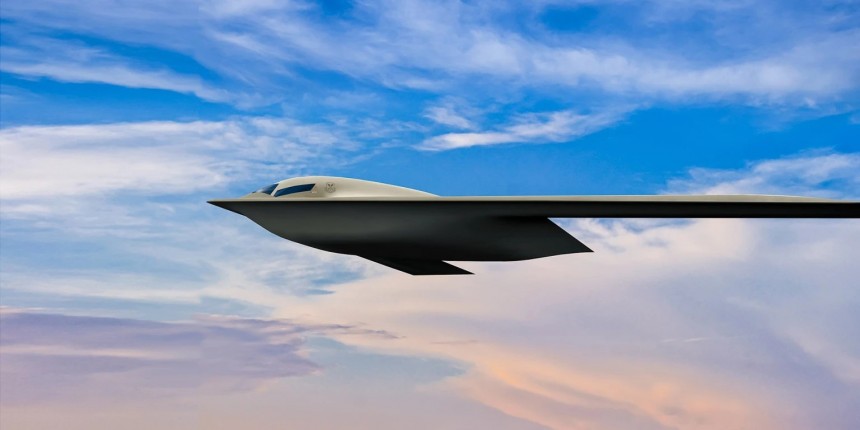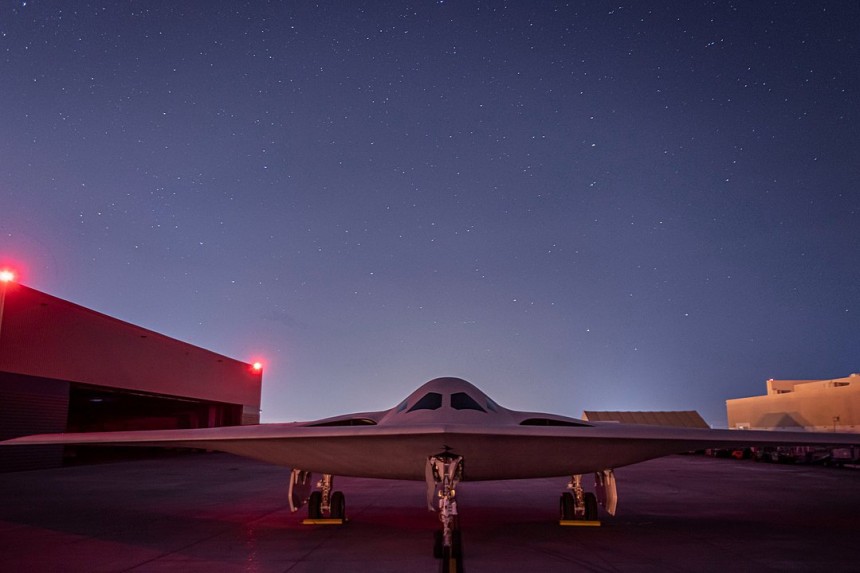Australia might be the most strategically valuable NATO ally in Oceania that isn't itself a part of the organization. That said, the spirit of cooperation between these two entities is as strong as ever. Strong enough that the Aussies are keen to fly NATO's newest strategic bomber asset, the Northrop Grumman B-21 Raider.
But why? What about the successor airplane to the B-2 Spirit is so irresistible to what's still, at the end of the day, a non-NATO member? Let's take a look at some of the ins and outs of the B-21 to uncover what is about the jet that the Aussie Military think tanks crave. On first impressions alone, it's not hard to understand their intrigue.
Even while the first testbed B-21 awaits its first flight at an Air Force/NASA installation in Palmdale, California, the expectations of the latest flying-wing American stealth bomber couldn't be any higher. As the spiritual torch bearer of not just the B-2 Spirit but also the old Northrop YB-35/YB-49s of legend, this new warbird has considerable heritage beneath its wings.
So much of the B-21's nuts and bolts remain under lock and key in top-secret military classifieds. But we can at least deduce a handful of things based on what we know so far. Firstly, it's important to realize there are only 20 B-2 Spirits in the U.S. Air Force's arsenal. To this day, approximately 60 B-52H Stratofortresses and 45 B-1B Lancers still constitute the bulk of America's strategic bombing power.
That's why, despite the B-21's decreased size and payload over a B-2, a projected fleet size projected by the Air Force of no less than 100 new Raiders will be incredibly beneficial by the time of its service introduction no sooner than the mid-2020s. As a strategic bomber, the B-21 will use its ability to fly thousands of miles unrefueled to take off from domestic or NATO-allied airbases and strike anywhere in the world without a whisper from enemy radar.
The exact nature of the B-21's radar stealth capability is perhaps the most highly classified part of its abilities. But the B-21's predecessor, the B-2, was as stealthy of an airplane as existed until the F-22 and F-35 arrived in the picture. As of 2013, not a single missile has even been reported fired at B-2 aircrews. This is likely true today as well, owing to the B-2's relatively light strategic workload over the last decade.
Keep in mind the B-2's range of 6,000 nautical miles (11,000km, 6,900 mi) is still the most impressive of any strategic bomber south of the B-52H in the current NATO arsenal. Knowing that Northrop Grumman expects the B-21 Raider to outperform even the B-2's range is nothing short of an impact statement. This would enable the B-21 to take from bases on the U.S.'s Pacific coast in Oregon, Washington, or California and strike targets in places like North Korea or Russia before landing in NATO-friendly nations like Japan or the Baltic states.
Assuming these claims about the B-21's range can be proven in real life, that would make it pound for pound, the most formidable strategic bomber ever constructed. But more than that, this makes the Raider the perfect fit for Royal Australian Air Force. Assuming the U.S. would even consider playing ball with that notion. Regardless of the U.S.'s perceived hesitancy to make it happen, the B-21 Raider elicited particular intrigue from the Australian Strategic Policy Institute.
Established in 2001 and based in Barton, Canberra, the ASPI is one of Australia's most influential private-sector military consultant groups. With an office in Washington D.C. and, therefore, presumably a cozy relationship with the Pentagon, the ASPI sees great potential in the B-21. The reasons why can be explained by the pages of history. As an isolated bastion of western culture and influence on the fringes of Oceania, the Australians, along with New Zealand, have routinely found themselves at odds with the territorial powers of East Asia, who sought to assert their dominance over the region.
In the Second World War, Imperial Japan was the prime aggressor. Through their island-hopping campaigns across modern-day Malaysia, Singapore, and the Philippines, the Japanese Navy may very well have invaded Australia and New Zealand had they not been forced back by the Americans and later the British. Today, Japan is a strong U.S. ally, as well as NATO and Australia, by extension. Instead, it's the Chinese and the Russians by association who pose the largest threat to Australian sovereignty. In 2016, Chinese state media unveiled that a stealthy strategic bomber, the B-21's equal, was underway by the state-run Xi'an Aircraft Industrial Corporation.
Dubbed the Xian H-20, one can only wonder if this secretive Chinese stealth bomber can strike the Australian mainland. That's a worrying notion for anyone living in either Australia or New Zealand. The ASPI evidently wishes not to push their luck. Though certain claims about a breadth of topics concerning the Chinese Military are certainly dubious and possibly complete falsehoods, history teaches us the road to imperialism in Oceania usually leads to mulling an invasion of Australia if left unchecked.
Whether they actually attempt such an invasion is largely up to factors outside of the Australian Military's control. With this in mind, a long-range strike-capable American strategic stealth bomber like the B-21 could be the ticket to keeping Chinese Military influence out of the region. It isn't very certain what stance the U.S. will take to exporting the B-21. Its predecessor, the B-2, certainly wasn't marketed to foreign markets whether the Americans could afford to meet demand or not.
In truth, Boeing's Australian division had a huge hand in the development of the MQ-28 Ghost Bat stealth UAV built to data-link with modern manned stealth jets. From multiple points of view, there's an argument to be made the MQ-28 is an airplane tailor-made for the B-21 Raider. As a likely candidate to be the B-21's future travel companion, the Australians can use the Ghost Bat to drum up at least some leverage to coax the U.S. into making a deal.
In the meantime, Boeing Australia is busying itself optimizing the MQ-28's flight systems for use with RAAF F/A-18F Super Hornets, E-7 Airborne Warning aircraft, KC-30 tankers, and, of course, the F-35A Lightning II. Could this striking new stealthy drone become a bartering chip in bringing the B-21 to Australia? The ASPI appears to point in that direction. As for the moment, expect the MQ-28 Ghost Bat to deploy sometime between 2024 and 2025.
If all goes according to plans, the B-21 should be ready to go into service within the same deployment window as its potential AI-assisted, self-driving counterpart. Even if the United States decided not to directly supply the Aussies with B-21s, expect RAAF F-35s to accompany USAF Raiders on deep strike missions in the event a provocation by Russia or China takes place in Oceania in the near future.
Even if the flashpoint of war takes place elsewhere in Asia, both Australia and New Zealand are still well within China's sphere of influence. It's perhaps just enough justification for the U.S. Air Force to do something it didn't do with the F-117 or the F-22, sell it to foreign markets. Imagine watching as the British seeth with jealousy as their former colony and a non-NATO member gets the shiny new American jet before they do.
Well, that's just how the cookie crumbles sometimes. For the time being, Northrop Grumman can at least hold their heads up with pride, knowing the B-21 is a real flight-ready airframe that's going to have its first test flight any day now. We can't say the same about the Chinese copycat. The U.S. Air Force still rules the roost in the strategic bomber space, it should use this opportunity very wisely.
Even while the first testbed B-21 awaits its first flight at an Air Force/NASA installation in Palmdale, California, the expectations of the latest flying-wing American stealth bomber couldn't be any higher. As the spiritual torch bearer of not just the B-2 Spirit but also the old Northrop YB-35/YB-49s of legend, this new warbird has considerable heritage beneath its wings.
So much of the B-21's nuts and bolts remain under lock and key in top-secret military classifieds. But we can at least deduce a handful of things based on what we know so far. Firstly, it's important to realize there are only 20 B-2 Spirits in the U.S. Air Force's arsenal. To this day, approximately 60 B-52H Stratofortresses and 45 B-1B Lancers still constitute the bulk of America's strategic bombing power.
That's why, despite the B-21's decreased size and payload over a B-2, a projected fleet size projected by the Air Force of no less than 100 new Raiders will be incredibly beneficial by the time of its service introduction no sooner than the mid-2020s. As a strategic bomber, the B-21 will use its ability to fly thousands of miles unrefueled to take off from domestic or NATO-allied airbases and strike anywhere in the world without a whisper from enemy radar.
Keep in mind the B-2's range of 6,000 nautical miles (11,000km, 6,900 mi) is still the most impressive of any strategic bomber south of the B-52H in the current NATO arsenal. Knowing that Northrop Grumman expects the B-21 Raider to outperform even the B-2's range is nothing short of an impact statement. This would enable the B-21 to take from bases on the U.S.'s Pacific coast in Oregon, Washington, or California and strike targets in places like North Korea or Russia before landing in NATO-friendly nations like Japan or the Baltic states.
Assuming these claims about the B-21's range can be proven in real life, that would make it pound for pound, the most formidable strategic bomber ever constructed. But more than that, this makes the Raider the perfect fit for Royal Australian Air Force. Assuming the U.S. would even consider playing ball with that notion. Regardless of the U.S.'s perceived hesitancy to make it happen, the B-21 Raider elicited particular intrigue from the Australian Strategic Policy Institute.
Established in 2001 and based in Barton, Canberra, the ASPI is one of Australia's most influential private-sector military consultant groups. With an office in Washington D.C. and, therefore, presumably a cozy relationship with the Pentagon, the ASPI sees great potential in the B-21. The reasons why can be explained by the pages of history. As an isolated bastion of western culture and influence on the fringes of Oceania, the Australians, along with New Zealand, have routinely found themselves at odds with the territorial powers of East Asia, who sought to assert their dominance over the region.
Dubbed the Xian H-20, one can only wonder if this secretive Chinese stealth bomber can strike the Australian mainland. That's a worrying notion for anyone living in either Australia or New Zealand. The ASPI evidently wishes not to push their luck. Though certain claims about a breadth of topics concerning the Chinese Military are certainly dubious and possibly complete falsehoods, history teaches us the road to imperialism in Oceania usually leads to mulling an invasion of Australia if left unchecked.
Whether they actually attempt such an invasion is largely up to factors outside of the Australian Military's control. With this in mind, a long-range strike-capable American strategic stealth bomber like the B-21 could be the ticket to keeping Chinese Military influence out of the region. It isn't very certain what stance the U.S. will take to exporting the B-21. Its predecessor, the B-2, certainly wasn't marketed to foreign markets whether the Americans could afford to meet demand or not.
In truth, Boeing's Australian division had a huge hand in the development of the MQ-28 Ghost Bat stealth UAV built to data-link with modern manned stealth jets. From multiple points of view, there's an argument to be made the MQ-28 is an airplane tailor-made for the B-21 Raider. As a likely candidate to be the B-21's future travel companion, the Australians can use the Ghost Bat to drum up at least some leverage to coax the U.S. into making a deal.
If all goes according to plans, the B-21 should be ready to go into service within the same deployment window as its potential AI-assisted, self-driving counterpart. Even if the United States decided not to directly supply the Aussies with B-21s, expect RAAF F-35s to accompany USAF Raiders on deep strike missions in the event a provocation by Russia or China takes place in Oceania in the near future.
Even if the flashpoint of war takes place elsewhere in Asia, both Australia and New Zealand are still well within China's sphere of influence. It's perhaps just enough justification for the U.S. Air Force to do something it didn't do with the F-117 or the F-22, sell it to foreign markets. Imagine watching as the British seeth with jealousy as their former colony and a non-NATO member gets the shiny new American jet before they do.
Well, that's just how the cookie crumbles sometimes. For the time being, Northrop Grumman can at least hold their heads up with pride, knowing the B-21 is a real flight-ready airframe that's going to have its first test flight any day now. We can't say the same about the Chinese copycat. The U.S. Air Force still rules the roost in the strategic bomber space, it should use this opportunity very wisely.















